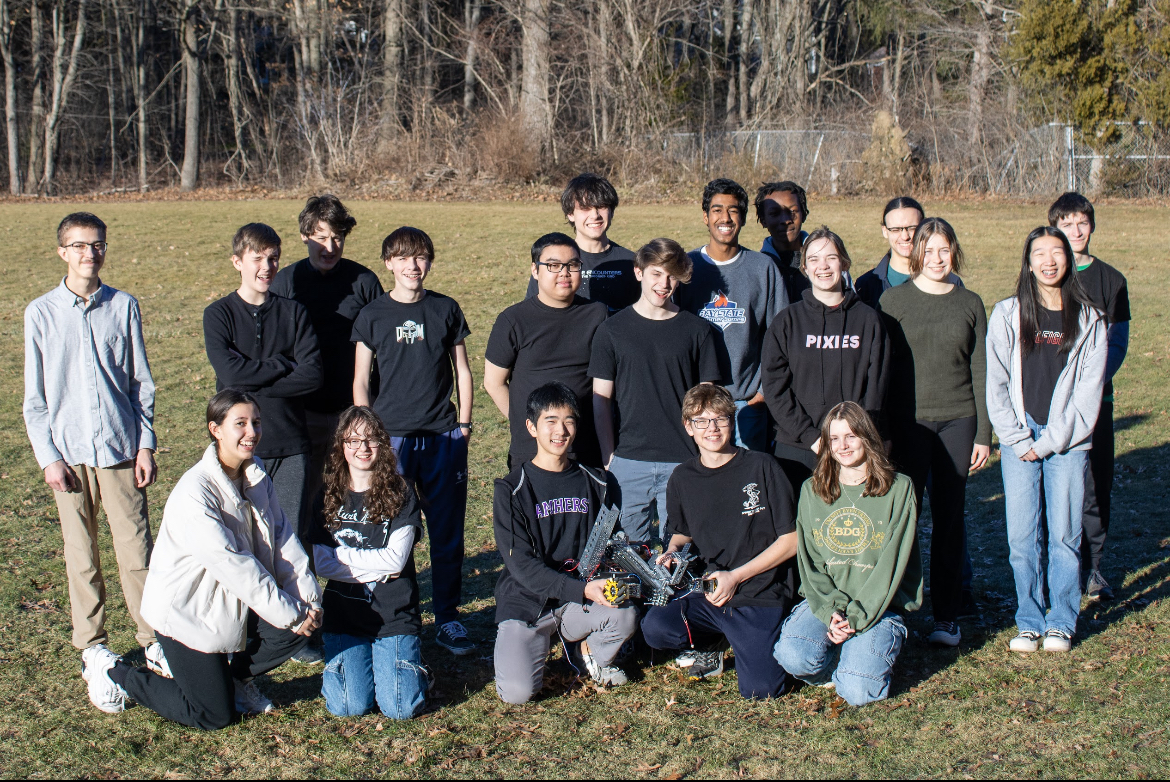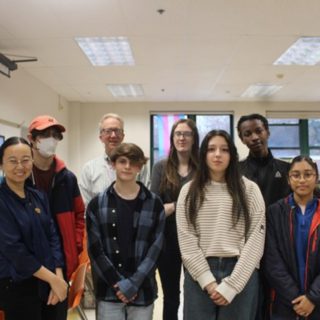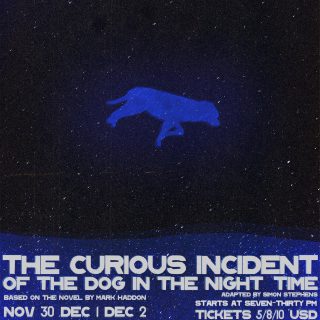Robotics team competitive in first year despite the challenges

While there may be over 3,000 FIRST Robotics teams in the world, starting one from scratch is no simple task.
The ARHS mini robotics club, founded juniors Alex Lagrant and Yoh Morita, has become an official FIRST team that participated in its first FTC competition this February.
Comparing the financial challenges, lack of experience, and shortened timespan to work on their robot to their achievements and progress thus far, this team has shown itself to be truly dedicated and determined to improve and expand.
“For Inspiration and Recognition of Science and Technology” (FIRST) was founded in 1989 to promote youth STEM education. They started their FTC program, or First Tech Challenge, in 2005.
“It’s a state, national, and international level competition,” said co-founder and hardware guy Alex Lagrant. “You’ve got a set of tasks given to you at the beginning of the season in September, then you’ve got to build a robot to complete those tasks to score points and compete in a competition, that starts in December and end February.”
The ARHS Robotics team wasn’t registered for FIRST from the get-go, assembling initially as a mini club. “We had FIRST in mind from the beginning,” said co-founder and software guy Yoh Morita. “We were experimenting with club stuff.” Gathering interest and recruiting team members was a crucial aspect of this mini-club period.
This period is also when head administrator Olivia Fisher joined the group. After the summer passed, more people joined, and the FTC season started. “There were a few that flaked out pretty quickly, but then we had a solid 10-15 people left,” said Fisher.
Team outreach continued even as the FTC season began. “We went to the middle school, we did a little intro class on FTC and robotics in high school, we gave them the robot and had them do a maze course with it,” said Lagrant. The team also presented at the Pelham Elementary School Spring Fair.
Though they had assembled an invested and dedicated team, one of the several major challenges that they faced over this past year was with finances.
The team had two main sources of money, one of them being a GoFundMe that they used to gather immediately accessible funds. “For the GoFundMe, I had my family send it around to my family and friends,” said Morita. “We went around Amherst door to door, to businesses in town, we gave people flyers asking for donations.” The team was able to raise about $1,700 total in this way.
The other, more time-consuming source of funding was the Perkins Grant, a federal grant for technical/vocational education which FIRST programs can benefit from.
However, orders processed through the grant take time. “We use it to buy non-consumable parts, like the starter kit and the game set,” said Lagrant. “We have to set up a wishlist before the summer, then we order it and supposedly we get our stuff by September, but we ended up getting most of our stuff in December, so we started a little bit late.”
Delayed delivery of parts brought about another issue: a lack of time. “We basically built [the robot] in two months when we were supposed to have five,” said Fisher. This put the team at a major disadvantage to their competitors.
They were set to compete at Brookline High School on February 17th, and the time crunch went right up to the start of the competition. Morita said that, the night before their competition, “[Jonas Theis] and I pulled an all-nighter trying to get it all done, but we didn’t get it all the way through.”
Fisher noted, “We were coding at the competition,” showing that the team had to put every last minute into the short amount of time they were given to attempt to make a functional, competitive robot.
The tasks the robot had to complete were difficult and varied. “It’s not like one task, but the main task here is that there are little pieces called pixels, and the goal is to place as many of those on the board [as possible],” said Morita.
Morita adds, “There’s also a paper airplane component of the robot, which launched in the last 30 seconds of the competition round. Each round is 2.5 mins, for the first 30 seconds [the robot] is automatic and the rest of the two minutes is manually operated time … There’s also a suspension, where the robot suspends itself from the rigging, it’s an 18-inch tall place where the robot hangs from at the end of each round.”
For the team, the competition itself didn’t exactly go perfectly. “At the start of one round, we moved it forward too quickly and we got caught on our hook, which fell off, it was velcroed on, we ran over it and it disconnected our battery,” said Lagrant.
“Our battery was dying, our drone servers failed, we had to splice the wires on the spot,” said Morita. “It was also the first time we were able to actually interact with the set, even though we technically had the set we were never able to set it up fully.”
The team ended 9th out of 23 competing teams.
The final challenge the team faced was a lack of experience. This being their first year, and with no FIRST veterans to help, the team had to navigate the whole process themselves. Lagrant said, “We were self-funded, self-taught, and had to buy all new parts.”
Finances also required more attention due to this lack of experience; “Some [other teams] have sponsors from companies like Boeing,” said Fisher.
Team supervisor Nick Harrison said, “It is highly unusual for a team to be competitive in its first year, and given the numerous disadvantages they faced I think we can count this year as a success.”
This seems to be the overall sentiment of the team, counting this year as an introductory one. Morita said, “This was really an experimental year, and a lot of things should go much more smoothly next year.” Harrison added, “We know so much more now, not only about how to play the game but how to do the admin, the organizational stuff, and learning how to navigate FIRST Robotics itself.”
As for next year, we only have hints as to what the FTC challenge will be. “From their teasers, I’m thinking they’re gonna want to experiment with marine technology,” said Morita. “They hinted at sonar a lot. It seems like there won’t be any involvement of actual water in the game, which is the first idea everyone had, but it would be hard to set up and test yourself. We’re gonna get the actual trailer mid-September.”
“We’re always welcome to have new members,” said Morita. Lagrant added, “Don’t be scared of how much experience you have, regardless if you know anything, don’t know anything – we knew nothing – we’ll find a place for you, we’ll teach you.”
If anyone is interested in joining the ARHS FIRST Robotics team, please contact Nick Harrison at: harrisonn@arps.org














